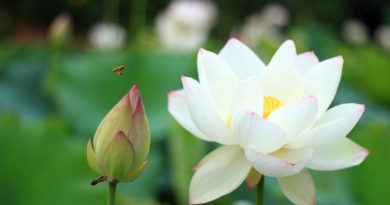THE PATTHANUDDESA DIPANI – CHAPTER 16: INDRIYA-PACCAYA
THE PATTHANUDDESA DIPANI – CHAPTER 16: INDRIYA-PACCAYA
The relation of control is of three kinds, namely coexistence, pre-existence and physical life.
Of these, the paccaya-Dhammas of the first kind [1] are the fifteen coexistent controls, namely, psychic life, consciousness, pleasure, pain, joy, grief, hedonic indifference, faith, energy, mindfulness, concentration, reason, the thought: “I-shall-come-to-know-the-unknown (Nibbána)”, the thought: “I-know”, and the thought: “I-have-known”. The paccayuppanna-Dhammas are their coexistent properties, both mental and material.
The paccaya-Dhammas of the second kind are the five sentient organs: the eye, the ear, the nose, the tongue and the body. The paccayupanna-Dhammas are the five senses together with their concomitants.
The paccaya-Dhammas of the third kind is only one, namely, physical life itself. And all kamma-born material qualities, with the exception of physical life itself, are its paccayuppanna-Dhammas.
In what sense is indriya to be understood? It is to be understood in the sense of “exercising control over”. Over what does it exercise control? It exercises control over its paccayuppanna-Dhammas. In what function? In their respective functions. Psychic life exercises control over its coexistent mental properties in infusing life, that is, in the matter of their prolongation by continuity. Consciousness exercises control in the matter of thinking about an object. The functioning of the rest has been explained in our recent Indriya-Yamaka-Dipani.
Here, some may put a question like this: “Why are the two sexes [2] –the female and the male–which are comprised in the category of controls, not taken in this relation as paccaya-Dhammas?” The answer is: Because they have none of the functions of a paccaya. A paccaya has three kinds of functioning, namely, producing, supporting and maintaining. Here, if A is causally related to B in B’s arising, A’s functioning is said to be that of producing, for had A not occurred, the arising of B would have been impossible. The functioning of Anantara may be instanced here. Again, if A is causally related to B in B’s existence, development and prosperity, A’s functioning is said to be that of supporting, for if A did not happen B would not stand, develop and flourish. The relation of Pacchajata will serve here as an example. And, if A is causally related to B in B’s prolongation by continuity, A’s functioning is said to be that of maintaining, for if A did not exist, B’s prolongation would be hampered, and its continuity would also be broken. The functioning of physical life will illustrate this.
Now, the two sexes do not execute any one of the said three functions. Therefore, they are not taken as a paccaya-Dhamma in this relation of control. If this be so, must they still be called controls? Yes, they must be called controls. Why? Because they have something of controlling power. They control the body in its sexual structure (linga), in its appearance (nimitta), in its characters (kutta), and in its outward dispositions (akappa). Therefore, at the period of conception, if the female sex is produced in a being, all its personality, i.e. the five aggregates produced by the Four Causes (kamma, and so forth), tends towards femininity. The whole body, indeed, displays nothing but the feminine structure, the feminine appearance, the feminine character, and the feminine outward disposition. Here, neither does the female sex produce those qualities, nor support, nor maintain them. But, in fact, when the body (i e. the five aggregates) has come into existence, the sex exercises control over it as if it (sex) were giving it the order to become so and so. All the aggregates also become in conformity with the sex, and not out of conformity. Such is the controlling power of the female sex in the feminine structure. In the same manner the male sex exercises control in the masculine structure. Thus the two sexes have controlling functions in the structures, hence they may” be called controls.
With regard to the heart-basis, though it acts as a basis for the two elements of mind-cognition, it does not control them in any way. For, whether the heart is limpid or not, the elements of mind-cognition in a person of well-trained mind never conform to it.
[End of the Indriya-Relation]
FOOTNOTES AND REFERENCES:
[1]: Of these, the last three are confined to lokuttara alone. And of these three, the first is the knowledge pertaining to the First Path, the second that pertaining to the last three Paths and the first three Fruitions, and the third pertaining to the last Fruition only.
[2]: See Compendium, Part VII.









